Title : Study of the dose of fertilization with pig manure on the productivity and dynamics of three groups of freshwater zooplankton (Rotifera, Cladocera and Copepoda) in a mesocosm
Abstract:
Zooplankton is a living prey better suited to feeding fish larvae due to its small microscopic size. To this end, a test on the productivity in an aboveground environment was carried out in order to contribute to the controlled production of zooplankton intended for the feeding of fish larvae. This trial was conducted for 28 days at the University of Dschang. A total of 5 treatments (T0 to T4) corresponding to doses of 0, 10, 15, 20 and 25 g of slurry per 50 l of water were distributed randomly and in three repetitions in 15 plastic buckets of 60 l capacity. Each of the buckets was stocked with zooplankton at a density of 25 individuals including 12 ind/l of rotifers, 11 ind/l of copepods and 2 ind/l of cladocerans. Data on zooplankton characteristics were collected every 7 days. The main results obtained showed that: the highest density values ??(6914.2 ind/l), daily production (491.2 ind/l/d) and zooplankton biomass (2011.7 µgPS/l) were obtained with the 25 g dose of slurry, followed by those of the 20 g dose (5448.2 ind/l; 1301.9 ind/l/d and 1471.5 µgDS/l). The lowest density (606.4 ind/l), daily production (49.1 ind/l/d) and zooplankton biomass (142.3 µgPS/l) were obtained with the control dose. The peak of zooplankton production varied according to the dose of slurry and the group of zooplankton, that is, 21 days for all doses in rotifers; 21 days for T3 and T4 in cladocera and 21 days for T1, T2 and T3 doses in copepods. In short, zooplankton productivity increased with the dose of pig manure.
Key words: zooplankton, pig manure, density, biomass, daily production.



